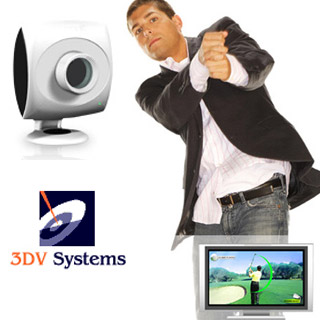 A report surfaced last week that Microsoft was buying 3DV Systems, a company that makes motion-detection technology, for $35 million. My sources confirm that this is true.
A report surfaced last week that Microsoft was buying 3DV Systems, a company that makes motion-detection technology, for $35 million. My sources confirm that this is true.
Microsoft and 3DV declined to comment to me last week.
Motion-detection will be big for the future direction of Microsoft, as it reacts to the Nintendo Wii, which revolutionized the game console industry with its motion detection technology.
As I’ve mentioned, buying 3DV would be the opening gambit in a next-generation user interface battle. It has bearing on the future video game console war, but also likely involve the future of gesture controls for the PC and TV.
The purchase price was very small, thanks to the weak economy and the long gestation that this technology is going through. 3DV has raised $38.5 million. 3DV’s investors include Elron, a member of Nochi Dankner’s IDB group, Pitango, Kleiner Perkins Caufield & Byers, and RDC Rafael Development Corp.
3DV has been working on its ZCams for some time. These cameras function much like Sony’s EyeToy, but they’re much more accurate at detecting motion. That’s because they’re 3-D depth cameras, which sense how far away an object is from the camera. In the camera’s black-and-white imaging, the closer objects are lighter and the more distant objects are darker. The camera captures the locations of objects many times per second, so it can detect an object and its trajectory, making it perfect for game control purposes.
When I did a demo of the technology, I was able to control a game just by waving my arms around. I could fly a plane by pretending to hold a joystick and also box against a virtual fighter by throwing punches toward the camera. The motion detection was accurate, much more so than with the Wii, which uses relatively cheap but primitive accelerometers and infrared technology for motion detection.
But 3DV’s cameras could also be used to control a computer or serve as a remote control for a TV. 3DV is just one of a bunch of companies in this area. Other 3-D depth camera makers include Canesta and PrimeSense. Softkinetic is making software to make the technology more usable, and GestureTek has a bunch of non-gaming gesture-based technologies on the market. Sixense is making another kind of gesture-control interface using magnetic fields.
Microsoft could either use 3DV Systems’ technology in a new game that comes with a gesture-control accessory, or it could put the 3DV technology into a brand new video game console. If it did the former, it could very quickly introduce something better than the Wii for use with the current Xbox 360 or the PC. The gesture-control accessory could work with just one game, much like Activision Blizzard packages a guitar accessory with its Guitar Hero games.
The risk of that strategy is that game developers aren’t likely to develop games that take advantage of that accessory unless that game is a massive hit. More ideally, Microsoft could wait until it can introduce the new gesture-control technology with a new game console in a few years. That way, developers can create games for it knowing that every single console sold will have the gesture control. The risk of waiting is that the Wii is likely to clean up in the meantime.
The Wii is the No. 1 game console, even though its graphics aren’t as good as the Xbox 360’s or the Sony PlayStation 3’s.
Check out our GamesBeat 09 game conference on March 24.
VentureBeat's mission is to be a digital town square for technical decision-makers to gain knowledge about transformative enterprise technology and transact. Learn More
